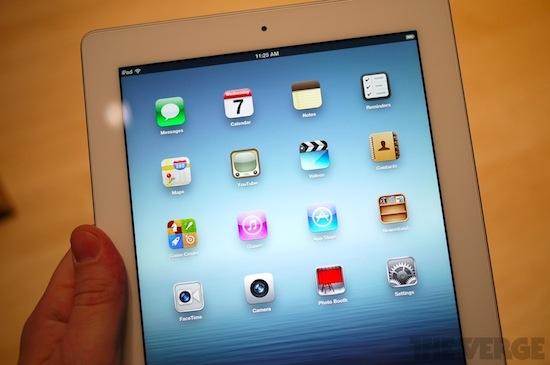
With a touchscreen device, some of the most important aspects of its specifications are within the display itself. Sure, processors, RAM, memory, cameras, battery life and everything in between matters, too. But it's all about that high definition.
Apple knocked us out of our seats with the iPhone 4, which launched in the summer of 2010 with the highest density display on any phone (at that time). The tiny, Retina Display on the iPhone 4 and 4S measures only 3.5-inches and packs a friendly 960 by 640, meaning that particular display touts a pixels per inch rating of 326. Other devices of that time – like the now classic EVO 4G, for instance – touted a giant, 4.3-inch display. However, it only packed a WVGA (800 by 480 pixels) resolution, which equates to 217ppi.
Oh, how times have changed.
Nowadays, it's uncommon for a phone to come sporting anything short of qHD resolution (960 by 540), and a large number of handsets come bearing full 720p displays. Some devices, like the Galaxy Note, exceed 720p with WXGA displays (1280 by 800 pixels). Pixels per inch measures keep climbing. When it comes to tablets, things are quite different. The vast majority of Android tablets ship with WXGA like the Note, while smaller tabs feature various, lower resolutions. And the original iPad came with a 1024 by 768 pixels.
That said, expectations have been on the rise for some time now, ever since the next generation iPad was rumored to feature a Retina Display. OEMs have been in a race to cram more pixels in the same amount of space.
Yesterday afternoon, Apple took the stage and finally made the new iPad official, with an HD display in tow. The Retina Display of the new iPad touts a display resolution that exceeds the number of pixels in a standard 1080p screen by over 50 percent, 2048 by 1536 pixels. And there are a handful of Android tablets on the horizon that will feature WUXGA displays at 1920 by 1200 pixels.
All of this is kind of crazy, don't you think? There is even talk that the rumored Samsung Galaxy S III might feature a 1080p dislpay. By no means am I saying that I won't take full advantage of displays that exceed or meet 1080p. But it's just a bit excessive, no?
While it may look beautiful, packing so many pixels can come with some serious caveats. In terms of the iPad's Retina Display, Apple quadrupled the number of pixels that the original iPad and iPad 2 had. They also introduced the A5X dual-core chip that touts quad-core graphics. Both of these things require suck a ton of juice, thus the need for Apple to jump from a 25Whr battery to a 42.5Whr cell. This resulted in a slightly thicker and heavier device while only maintaining the expected 10 hours of battery life.
Without proper optimization, super high resolution displays can negatively affect performance, too. I'm sure the A5X and NVIDIA's Tegra 3 can handle larger than 1080p resolutions – otherwise we wouldn't even be talking about this. But that's still a lot of pixels to push. Even with hardware that is fully capable of handling the workload, it's easily possible for the software to be lacking. I wouldn't be surprised to see a drop in frame rate or intermittent lag on some HD devices.
Also, the size of applications and games are going to start shooting through the roof. Google just bumped the maximum application size to 4GB (50MB for the actual APK file). As if downloads weren't large enough already, HD graphics will definitely increase file sizes for just about everything.
So is any of this something I want?
Honestly, I'm on the fence about it. There's no doubt I love crystal clear graphics. I've become a bit of a pixel junkie as of late, especially after owning the Galaxy Nexus and iPhone 4S, and picking up photography as a bit of a hobby. But as many of you already know, I bought a Transformer Prime a few weeks ago and after nearly a year with the Galaxy Tab 10.1, I grew used to the standard graphics. I don't need true HD. And for now, I would prefer steady performance over insane graphics. For one, mobile gaming is finally coming around, but it's not quite up to par yet. (I spent a few hours yesterday testing a bunch of the Android games I have bought for gamepad support and was disappointed to find very few non-Xperia Play games support PS3 or Xbox controllers.) Nothing about on-screen controls makes me want to play a (console-like) game from my tablet.
Then again, it is kind of disappointing to see the limitations of Adobe's Photoshop Touch application due to hardware. Viewing and editing pictures could be a lot better if the resolution were just a tad higher. But I can't realistically edit photos (and export them in HD) from my tablet anyway ... yet.
High definition is nice. There's no question about that. In fact, it's hard to even say I don't want it. I do. But, right now, there's little that can take advantage of it, and for once, I'd like to give a technology a little time to bake a while before jumping on the bandwagon. For the time being, 720p and WXGA will do for me.
Regardless, I want to hear you side, readers. Are you more interested in as many pixels as possible? Or do you want to wait until more apps and games will support the super HD resolutions? Are you buying an Android tablet or the new iPad simply for a higher res display?
Image via The Verge